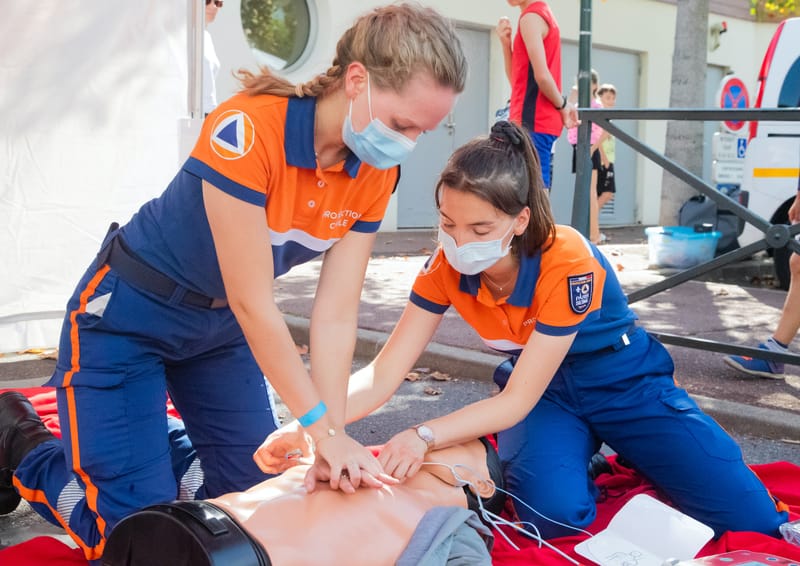Advice On CPR

What do you do if you come across someone who is unconscious?
Check for a response, shake the person’s shoulders and ask loudly ‘are you alright?’
Shout for help. If someone is nearby, ask them to stay as you might need them.
If you are alone, shout loudly to attract attention, but don’t leave the person.
Call 999
If someone is unconscious and not breathing normally, call 999.
When you call an ambulance, you should be given basic life-saving instructions over the phone, including advice about CPR.
Start CPR
Why we use CPR
A cardiac arrest is a serious emergency. When your heart stops pumping blood, your brain gets no oxygen. It causes the person to fall unconscious and stop breathing. Without CPR the person will die within minutes.
When to use CPR
CPR should only be done if someone is: unconscious and not breathing, unconscious and not breathing properly.
With or without breaths?
If you have been trained in CPR, including rescue breaths, and feel confident using your skills, you should give chest compressions with rescue breaths. If you’re not completely confident, attempt hands-only CPR instead.
Hands-only CPR
To carry out a chest compression:
- Kneel next to the person and place the heel of your hand on the breastbone at the centre of their chest. Place the palm of your other hand on top of the hand that’s on their chest and interlock your fingers.
- Position yourself so your shoulders are directly above your hands.
- Using your body weight (not just your arms), press straight down by 5 to 6 cm (2 to 2.5 inches) on their chest.
- Keeping your hands on their chest, release the compression and allow their chest to return to its original position.
- Repeat these compressions at a rate of 100 to 120 times a minute until an ambulance arrives or for as long as you can.
NB. CPR on a child or baby is different – you can find more information on how to perform this here.
Using a Defibrillator
Don’t stop CPR to go and find one, send for help
If you’re on your own, don’t interrupt CPR to go and find a defibrillator. If it’s possible, send someone else to find one.
Where will you find a Defibrillator?
Defibrillators are normally located in workplaces and public spaces like airports, shopping centres, community centres, and train stations. These defibrillators are known as public access defibrillators (PADs) as anyone can use them. When you call 999, the operator can tell you if there’s a public access defibrillator nearby.
What will it look like when you first open it up?
Automatic external defibrillators are often just the size of a first aid box. More importantly, they talk to you. They are safe, easy to use, and designed specifically to be out in the community, in your workplace, so that anyone can pick it up urgently and use it.
But it will tell you exactly what to do…
Once you turn it on, it will give clear instructions on how to attach the defibrillator pads. The device checks the heart rhythm and will only tell you to shock if it’s needed. You can’t shock someone accidentally.
How to use a Defibrillator
Turn the defibrillator on by pressing the green button and follow its instructions.
Peel off the sticky pads and attach them to the patient’s skin, one on each side of the chest, as shown in the picture on the defibrillator.
Once attached, stop CPR. Don’t touch the patient.
The defibrillator will then check the patient’s heart rhythm.
The defibrillator will decide whether a shock is needed and if so, it will tell you to press the shock button. An automatic defibrillator will shock the patient without prompt.
Don’t touch the patient while they are being shocked.
The defibrillator will tell you when you need to continue CPR.
Continue with chest compressions until the patient shows signs of life or the defibrillator tells you to stop so it can analyse the heartbeat again.
By performing CPR and using a defibrillator, you’ll give someone the best possible chance of survival.